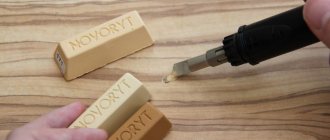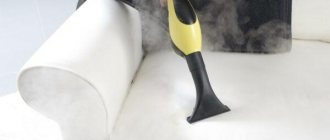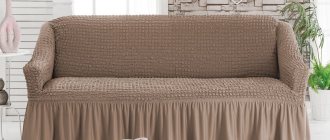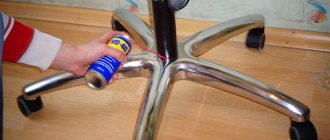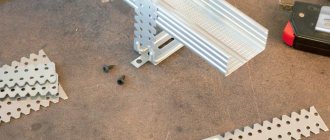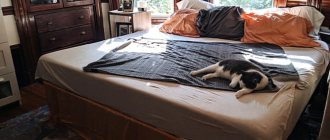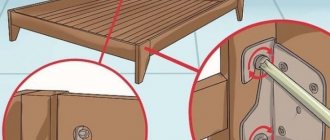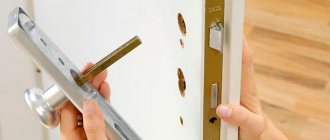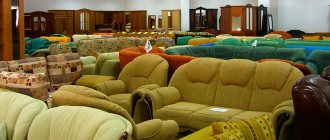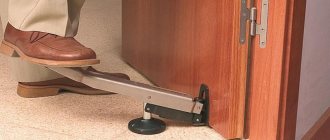Leatherette items serve their owners for a long time, but after some time, cracks or small scratches appear on them. A small crack can soon become a big hole. Such damage spoils the appearance of the item and renders it unusable. Therefore, the service life of this product is significantly reduced. Let's talk about possible options for repairing leatherette products.
How to restore eco-leather
Gloves, a purse, a business card holder that have lost their shine and color saturation are wiped with fresh orange peel. But keep in mind that the product will fade again in just a week. Grease stains are perfectly removed by dishwashing detergents. Drop a little product onto a damp sponge and wipe the contaminated area with it.
The gel can be washed off immediately or left for several hours. Gasoline or turpentine helps fight stubborn stains. Professional paints for artificial and natural leather perfectly renew the color. The coloring pigment literally penetrates into the structure of the fabric.
The main advantage of this method is the rich color palette: from neutral colors to acidic shades. Transparent varnish is used as the finishing layer. Aerosols paint over areas with peeling paint, fill small scratches and smooth out the surface. The product should be applied in the thinnest layer: a large amount of paint is the main reason for the formation of smudges and cracking of a freshly painted area.
Methods and materials
An alternative to aerosols and professional paints is liquid leather. The product contains an adhesive base, dyes and rubber resin.
Liquid leather creates a so-called leather relief on the surface. Ideal at first glance, the material has its drawbacks. For example, it is only suitable for filling scratches, cuts and punctures. It will not be possible to patch a large gap.
Difficulties also arise when choosing the right shade. Rare colors are obtained only by mixing primary tones. During work, you must strictly follow the instructions and not neglect the basic laws of color. It is unlikely that you will be able to choose an unusual color palette with a predominance of golden and silver shades.
Manufacturers offer only classic colors: black, white, red, green, blue, yellow, brown, gray. Liquid leather recreates both glossy and matte textures.
What to look for when doing your own repairs and choosing materials
The main thing in restoring eco-leather is recreating the relief pattern. It is better to paint over a small area (no more than 1 cm2) with a brush. The surface is pre-degreased for better adhesion of the eco-leather to the polymer material. The place of puncture, cut, or scratch is cleaned of protruding fibers of fabric and glued with gauze from the inside.
Liquid leather is applied in two stages: first, a very thin first layer, then a second layer, applied after two to three hours. Restored eco-leather dries completely within 24 hours.
This method is only suitable for perfectly smooth surfaces. An ordinary napkin on which liquid leather is applied will help to recreate the relief. The napkin must be applied to the entire area with a clearly embossed pattern, and then dried for ten hours. This blank will serve as a template for creating natural irregularities.
The napkin should be applied only after applying two layers. You can get an imprint using a piece of natural or artificial leather, which is cut from old shoes or gloves.
Attention! Never apply liquid leather in a thick layer
Tears or holes
If your furniture has been damaged by a cigarette burn, or has been torn and now has uneven edges, “liquid leather” will help. This substance can be found in a repair kit for leather furniture, but if you don’t have such a kit, you can buy it separately. Liquid skin looks like a creamy paste and is applied with a small spatula. After the mass dries, the substance becomes similar to an elastic film and is practically no different from the coating of furniture.
Storage of liquid skin
If liquid skin is stored correctly, then such a tube can be used repeatedly and for a very long time. Moreover, the mixture does not change its characteristics and features for the worse.
Manufacturers recommend storing the tube with the adhesive mixture in places that are difficult for children to reach, and should not expose it to direct sunlight. The ideal storage temperature is zero degrees Celsius.
The result of using liquid skin.
If you follow all the recommendations regarding the storage of liquid leather, then it is quite safe and relevant to use it for two years.
Liquid leather applied to the area required for restoration can retain its characteristics for 35 years. At the same time, it does not change its qualities when the air temperature fluctuates in the following range: from -35 to +70.
What is eco-leather made from?
Eco-leather is a relatively new material, made from 100% cotton. It is covered with a layer of polyurethane on top, without adding various impurities. The positive characteristics of eco-leather products are:
- No unpleasant odor.
- Excellent breathability (due to the large number of pores contained in the material).
- Hygroscopicity.
- Hypoallergenic (this material is safe even for small children).
- They are not picky about temperatures (they do not get particularly hot when exposed to direct sunlight and do not freeze in the cold).
What is liquid skin
Liquid leather is a polymer mixture based on two elements:
- water;
- alcohol.
These are the main components, but in addition to them, rubber resin and a sticky adhesive base are also used. These components allow the prepared mixture, upon contact with a leather product or leatherette furniture, to adhere as tightly as possible and form a fairly elastic consistency.
After liquid leather for furniture has hardened, it is almost impossible to distinguish it from the material, since the mixture perfectly adapts to the characteristics of the leather, and taking into account the fact that the characteristics are as identical as possible not only from the visual side, but also in technical parameters, it can be called liquid skin is an ideal way to solve such issues.
The photo shows an example of how you can update leather furniture.
Almost every happy owner of a leather sofa has faced the need for periodic restoration.
And if the furniture has some unusual shade that is not on sale, then you can mix several options to obtain the desired effect. These products are used in many places, but its main direction is the restoration of leather goods. However, this material is also great for:
- dermantine;
- artificial leather;
- vinyl.
Not all damage to the skin can be repaired.
The specificity of liquid leather is such that only minor damage can be repaired. Large abrasions cannot be hidden with such material.
Artificial leather repair
Many people still associate artificial leather with dermatin (vinyl leather), the times of which are irrevocably fading.
The scope of its application has decreased significantly in recent years, although it still remains quite wide. Modern artificial leather is a completely different material. Not inferior in appearance to natural leather, this material even surpasses it in many respects. Sometimes the owner of branded sports shoes, bought for decent money, does not even suspect that they are made of high-quality leatherette. This is not a minus of this product at all, but rather its plus. Because high-tech artificial leather is stronger, more resilient and elastic, and more resistant to changes in temperature and humidity. And sometimes even more “breathable”. And always no less expensive than natural ones.
There are, of course, simpler types of modern artificial leather; they are mainly supplied to the market by our friends from the most populous large Asian country in the world. They are cheap and not as good as materials from European and American manufacturers, but they are far from leatherette!
However, we are not so much concerned with the consumer qualities of the material as with the possibility of using liquid leather to eliminate cuts, abrasions, burns, etc.
Care method
The structure of the material consists of two layers:
- microporous polyurethane film with a printed surface of natural composition on the top layer;
- polyester base.
The combination ensures ventilation and moisture permeability. Therefore, product care is carried out quickly and without special costs.
You have these rules on how to care for eco-leather on furniture:
- avoid strong friction of the upholstery, do not press intensely;
- wipe with slightly damp towels so that excess moisture does not penetrate between the layers;
- Place sofas and armchairs made of this material away from sources of heat and light.
On a note! Use soft rags for cleaning. Polishing is allowed with products intended for genuine leather. Rub the surface once a year with a water-repellent preparation.
Where to go if you have a jacket and a sofa?
Leather jackets are repaired in specialized workshops.
There are professionals working there who select the best option for eliminating damage to the product. Contact any clothing restoration shop.
In the case of a sofa, you need to contact a company that specializes in furniture restoration, reupholstery and assembly. Usually the process does not take much time, and specialists can work at the client’s home.
Each item requires careful care and attention, especially when it comes to leather versions of the product. A leatherette jacket should only be stored on hangers, and it should be cared for by dry cleaning. It is better to cover a sofa made of this material with a special cover that protects the product from damage. Take good care of your things and they will last you a long time.
Storing a Leather Jacket
Leather jackets should be stored on a hanger
In order for your favorite jacket to delight you with its pristine appearance for many years, you need to take care of it not only during wear, but also to ensure optimal conditions during long-term storage.
To prevent the jacket from losing its shape, it must be stored on a hanger; it must not be folded, as this can lead to the formation of creases and cracks.
After hanging the jacket, it is advisable to cover it with a cover made of breathable fabric.
To prevent the skin from losing its properties, it is necessary to maintain a certain humidity and temperature. The storage location must be well ventilated and dry.
The ideal parameters are a temperature of about 20° and a humidity of 50-60%.
What to do if the leatherette on upholstered furniture begins to crack
Did you like the article? Follow our channel for new ideas of useful car tips. Subscribe to us in Yandex.Zen. Subscribe.
Leatherette items serve their owners for a long time, but after some time, cracks or small scratches appear on them. A small crack can soon become a big hole. Such damage spoils the appearance of the item and renders it unusable. Therefore, the service life of this product is significantly reduced. Let's talk about possible options for repairing leatherette products.
How to restore leatherette?
Creases on leatherette appear even faster than on natural material. You should not hesitate to correct them, as they quickly turn into cracks. To deal with the problem, proceed as follows:
- remove dust and dirt from the surface;
- Heat the wax in a water bath;
- fill folds with it;
- wait until the wax hardens, remove its excess;
- apply a thick cream to the product;
- After an hour, polish the treated surface.
You can also try to eliminate defects on leatherette using an iron.
However, you need to act carefully, since non-natural matter is more susceptible to the influence of hot steam. To carry out the procedure, be sure to use a damp cloth
You need to keep the iron at some distance from the item
To carry out the procedure, it is necessary to use a damp cloth. You need to keep the iron at some distance from the item.
Cuts
Dealing with cuts on leather furniture is a little more difficult than dealing with a regular abrasion or scratch. But this does not mean that it is impossible to correct the situation. In this case, a patch will help you. The material from which it will be made is not so important, the main thing is that it is dense and elastic. You will need tweezers, with which a patch slightly larger than the cut must be placed under the top layer of the leather covering of the furniture, then take a toothpick, dip it in special leather glue and with a precise movement, spread the adhesive on the inner surface of the leather around the cut. After this, gently press the skin onto the patch, while clearly aligning the edges.
How to remove household stains from leatherette
To remove traces of tea and coffee from your skin, you need to do the following:
- Ammonia should be diluted in water;
- soak a sponge in this mixture;
- rub the stain;
- Remove the remains with a napkin.
Ballpoint pen stains can be removed with hairspray or glass cleaning solution.
- the selected product should be sprayed generously onto a rag or directly onto ink marks;
- rub the stain until it disappears;
- if this does not happen, then you should add the product to the stain and rub again;
- Remove residues with a damp cloth;
- dry the area with a napkin.
Traces of oil paint are removed using purified turpentine:
- the sponge is moistened in the substance;
- rub the stain until it disappears completely;
- Use a soapy solution to wash the treatment area;
- dry with a napkin.
If you can determine the origin of the stain, then removing it will be much easier. Each of the contaminants requires its own approach. For example, chocolate can be easily scrubbed with glycerin soap. Remains of bitumen and any resin are removed with 90% ethyl alcohol. You can also use turpentine oil. Red wine can be removed with a mixture of vinegar and soap suds.
You should also remember that a fresh stain is always easier to remove than an old one. Therefore, as soon as contamination has been noticed, action must be taken. Rubbing too intensely on the surface of a leather product will damage it. All manipulations must be careful. If you have the opportunity to contact specialists, do not neglect it.
Blood stains
Fresh stains are washed off with regular cold water. You can also apply a cotton swab soaked in 3% hydrogen peroxide to the stained area, leaving it for 2-3 minutes. The stain will dissolve. A soap solution with 5% ammonia will help remove old stains.
You can clean artificial leather from such contaminants with a soap solution to which vinegar essence has been added in the proportion of 1 tablespoon to 1 glass of water. Instead of essence, citric acid diluted with water is also suitable.
Chewing gum, resin, plasticine
We suggest you read: What to do if the washing machine is turned off and fills with water
Wipe off with a cotton pad soaked in ethyl alcohol.
Coffee, chocolate, eggs, milk, tea
Can be washed with a soft sponge and soapy water. After removing stains, rinse the surface with water.
Fruit juices, jam, adjika, ketchup
Grease, cream, oil, ink, greasy lipstick
If the surface is heavily contaminated, use ethyl alcohol or turpentine. In other cases, a soap solution will be sufficient.
Oil paint
It is cleaned with turpentine oil, then the surface is treated with a neutral detergent and washed with water.
Use nail polish remover.
Decorative cosmetics
To remove such stains, a soap solution, 30% ethyl alcohol or 5% ammonia solution is suitable.
Yellowness on white leatherette, green grass stains
Squeeze fresh lemon juice and rub it over the surface. It will help deal with stains and add shine to leatherette.
Remember that after each treatment of the product with the above-mentioned products, you need to rinse the cleaned surface with clean water and wipe dry. Learn to care for leatherette correctly, then your things will always please you with an excellent appearance.
How to fix a gap with your own hands
It is believed that leather is a fairly durable material, but it can also tear. Although, of course, holes appear less often on such products than on fabric and canvas ones. If this has already happened, then the instructions for bringing the jacket into proper shape depend mainly on the form of damage that has occurred. There are situations when the material is torn by a “corner”, and there are situations when a piece of skin flies off completely.
In the first case, the sequence of actions is as follows:
- Provide access to the tear from the inside of the leather jacket. It is necessary to rip the jacket lining along one of the seams.
- Carefully, as far as possible, smooth out the torn corner. Now you need to fit it back and secure it with tape on the front side.
- We glue a patch made of leather, thick fabric or suede from the inside. We make sure that the overlay is larger than the tear site and protrudes beyond each of its edges by 10-15 mm.
- Having smoothed the surface from the inside, we install something heavy on the front side. Leave the load until the patch is completely dry.
- We remove the tape. Apply a thin layer of glue along the entire joint of the gap from the outside (it is convenient to use the tip of a toothpick for this).
- We mask the damaged area with a special leather paint to match the product or a regular cream.
- Sew up the inner lining.
Important: Please note that the tape you take is initially very sticky. It may leave marks on the surface of the jacket. It's better to "weaken" it. To do this, glue it to the surface of your leg, peel it off, and then use it for its intended purpose.
In a situation where the hole in the jacket is obvious and a piece of material is completely torn out, repairing the product is somewhat different.
- We rip the lining from the inside in order to get to the place where the skin is torn.
- We level the damaged area as much as possible, glue a patch from the inside, and place a weight on it.
- After the glue has completely dried, we repair the front part of the product. If the “original” torn piece is lost, you need to cut another one from a flap of leather, which is as similar in characteristics as possible to the material of the jacket. We make sure that it is identical to the shape of the hole. We put this piece into the hole.
- Carefully fill the resulting joint with glue along the entire perimeter of the outer patch.
- After everything has dried, paint over the damaged area. Sew up the ripped lining.
If the gap is large and is in plain sight, then repairing it with your own hands will be quite problematic. It is better to contact qualified craftsmen for help in the studio. If an area of skin needs to be replaced, specialists will be able to select the most suitable flap and carefully stitch it in the right place.
Tip: Alternatively, you can seal the jacket yourself and add leather patches. Particular attention should be paid to masking the damage. For example, you can install additional decor in this place. This approach will not only hide traces of the tear, but will also give the jacket originality.
We use improvised means
For quick repairs, various preparations that are already in the household are suitable. When choosing a specific technique, it is necessary to take into account the degree of skin damage.
Wax
Repairing leather with wax or paraffin is a simple and inexpensive way to solve the problem. At the same time, the restoration efficiency will be quite high even with deep scratches.
How to use:
- Warm the wax (paraffin) to a warm temperature.
- Apply the product to the affected area using a small spatula or other object with a flat tip.
- Allow time for the wax to harden - about 10 minutes.
- Polish the surface with a soft cloth.
- Apply camouflage cream of a suitable shade.
Without a final application of camouflage cream, the scratch mark will remain visible.
Nail polish
For processing, it is better to use colorless nail polish. In order for the application to be precise and accurate, you should use a toothpick rather than a brush.
Procedure:
- dip the tip of a toothpick into the varnish and apply to the scratch;
- reduce the edges of the scratch;
- press the repaired area and leave under pressure for several minutes, placing a piece of cloth;
- If the area with the scratch is noticeable, paint over it with paint to match the skin tone.
Glue
Rubber glue is a product with water-repellent properties that can also be used to restore leather products. You can give preference to glue only if the scratches are small.
You should choose an adhesive composition that contains natural rubber, “BF-2”, “Moment” or a special one, which indicates that it is intended for repairing leather products.
Since the glue is colorless, after it dries, the surface of the skin must be treated with a masking cream.
Olive oil
You can make scratches less noticeable using olive oil. It is applied to a sponge or napkin and rubbed into the damaged skin with soft circular movements.
After this, you need to leave the product for an hour so that the oil is absorbed. For best effect, it is advisable to preheat the oil.
The use of vegetable oil provides a gentle effect that can be repeated if necessary.
Marker
You can quickly make a scratch invisible using a matching marker. This will make it possible to fix the defect in just a couple of seconds. The disadvantage of this method is the fragility of the repair. The use of a marker can be used as a last resort when no other means are possible.
Shoe polish
Shoe polish of a suitable color allows you to hide the defect, making it invisible. At the same time, the scratch itself becomes less noticeable, but does not disappear anywhere. The cream should be applied very carefully, using a cotton swab, not in a thick layer. The more carefully the color of the cream is selected, the better the result will be.
Application of water-soluble polymers
Special products can be used to repair leather items and remove scratches. One of the most effective is “liquid skin”. You can purchase this drug in departments of household chemicals, auto chemicals and in stores that sell leather goods.
At its core, “liquid leather” is a water-soluble polymer that, when used, fills a scratch on the surface and literally seals it. After the polymer has dried, the repaired area becomes invisible and gains strength.
Liquid leather is produced by manufacturers in different shades. If there is such a need, you can mix several colors in a separate container.
Using polymer repair products is not difficult, but it requires care. After processing is completed, the item must dry completely so that the composition hardens and gains strength. To do this, the product should not be used for 24 hours.
Application procedure:
- Clean the surface to be treated.
- Apply a thin layer of product to the scratch using a plastic scraper. If the damage is deep enough, it may be necessary to pre-strengthen the material from the inside.
- Distribute and smooth the product with a dry sponge.
- Allow time for the composition to dry completely.
- Polish the surface with a soft cloth.
- If necessary, apply additional layers, allowing for intermediate drying.
- Wipe the area with a sponge soaked in milk or emollient.
The reaction of artificial leather to the use of the product is not predictable, therefore, before applying the drug, it should first be tested on an inconspicuous area or a separate piece of material.
The leatherette on the sofa is cracked, what should I do?
The upholstery on the sofa is exposed to mechanical stress almost constantly, especially if there are small children in the house. You don’t always want to get rid of a cozy leather sofa if it has cracks and damage. There are several options to get rid of this problem:
Repair kits, adhesive materials
This method is also suitable for small scratches that must be restored without fail. Today on the construction market you can purchase various replacement repair kits. It includes liquid leather and specialized tools to make it easier to apply. The assortment includes popular colors, so choosing them will not be difficult.
Adhesive materials require painstaking care and attention. Before starting work, be sure to read the instructions for using the product.
How to clean an eco-leather sofa
Eco-leather has a water-repellent property and does not immediately absorb dirt. It is advisable to immediately wipe any stain with a damp cloth. There are almost never any marks left on dark furniture. Upholstery in light colors may leave a pale mark, which will require a little more effort.
Problems appear when the stain has had time to be absorbed. Stains from ballpoint pens are especially difficult to remove. In this case, you need to choose a method that will not damage the polyurethane layer on the surface of the upholstery, but will be able to deeply clean it.
How to clean eco-leather from dirt
It is better to start cleaning any stains with the most gentle substances, and only if they do not work, move on to more effective and aggressive ones. The eco-leather surface can only be rubbed with light pressure, without stretching.
Eco-leather comes in different qualities depending on the quality of the material itself and the thickness of the polyurethane layer. The same cleaning product may be harmless for the upholstery of one sofa and irrevocably damage the upholstery of another. Therefore, it is better to first try any product except, perhaps, a melamine sponge and a damp cloth on an inconspicuous area of furniture.
When cleaning a stain with laundry soap, lemon juice, a solution of ethyl or ammonia, hydrogen peroxide, dishwashing detergent, this should be done with a soft cloth or sponge, or a cotton swab or disk. It is necessary to have clean water, a rag for clean water and a dry rag on hand. Eco-leather should not be in contact with water for a long time, and especially with other solutions. Penetrating into the material, the liquid changes its structure and can leave a noticeable stain that is more difficult to remove.
How to clean eco-leather on a white sofa
When buying a sofa upholstered in white eco-leather, you need to take it for granted that maintaining it in perfect condition is especially troublesome. Even small stains are clearly visible on it, especially when exposed to natural daylight. And removing any harmless stain can result in stains and the appearance of a larger stain.
For particularly demanding owners of a white sofa, it is better to have a special cleaning product in their household. The most popular is Vineet. You can choose any other, and although there are not many of them, a sales assistant in a household chemicals store will probably find something suitable.
In any case, it is better to resort to stain removal using chemicals, even special ones, only if the dry method - a melamine sponge - does not help.
How to clean eco-leather from a ballpoint pen
Ballpoint pen paste can easily be called the main danger to eco-leather among contaminants.
Special chemicals do not always cope with it. Even the most effective ones leave strong stains after the first use. Repeating the procedure is necessary.
On Internet forums, participants share their personal experiences. There are many quite aggressive methods: hairspray, toothpaste, 70% alcohol solution (perfume), nail polish and shellac remover.
How to clean a white eco-leather stroller
A baby stroller requires a special approach. Although its appearance is important, the priority remains the safety of the newborn and favorable conditions for his fragile health.
It is unacceptable to use products with harmful compounds and fragrances.
Caring for the stroller involves wiping it with a melamine sponge. For stubborn stains that a dry or damp sponge cannot remove, a solution of laundry soap, hydrogen peroxide, and alcohol solutions are suitable. When using alcohol solutions, care must be taken to ensure that all vapors dissipate before the child is in the stroller. Weathering occurs quite quickly, but it is better to complete the procedure in advance of the walk. You can check whether the fumes have dissipated by simply smelling the stroller.
Restoration of upholstered furniture inside and outside. Step by step examples
Repair and restoration of upholstered furniture may consist of the following stages:
- Disassembling an object into its component parts. Typically, this is required for furniture with wooden legs, armrests or other parts that need repair or replacement.
- Sanding wooden elements using sandpaper, followed by cleaning with a damp cloth. The wet cloth should absorb all the small particles, so the paint (or varnish) will lie smoother and last longer.
- Painting wood. Before applying paint with a brush, it is recommended to coat the surface with a primer. We still recommend using spray paint, which is applied easily and evenly, which will greatly simplify your work and save time. Usually 3 layers is more than enough. After the paint has dried, you can apply a protective coating to it, which will prevent chipping.
To learn more about painting, varnishing, decoupage and repair of wooden furniture, read our article Restoration of Soviet furniture.
- Replacement of internal filling and upholstery. We will tell you in detail how to repair the springs inside an old sofa or chair below in this article. As for reupholstering upholstered furniture, everything depends on the characteristics of the product being restored. For example, the seat of the chair in this example was simply wrapped in new fabric, which was secured with a stapler. You will see more examples with step-by-step photos below!
- Assembling a piece of furniture into a single whole.
How do you like this transformation?
How to repair a jacket or sofa
First, it is important to assess the extent of the damage. If repairs are impractical, then it is easier to buy a new item, but if the damage is not severe, or does not cover the entire surface, then repairs can be carried out
How to do it:
Contact professionals in a special studio. Believe me, this is the best solution if leatherette cracks. They will carry out the restoration quickly and efficiently, asking for a literally nominal fee. But they still have to pay;
Do everything at home, using improvised means or “liquid skin”. If the damage is really minor this is the preferred option. But you will need to choose the right color of the material, as well as carry out all the work perfectly.
In the first case, you don’t need to do anything - just pay and wait. Therefore, we immediately move on to the second method.
In this case, you will need vinyl leather and, in fact, the main means for restoration. It should be noted that this option is only suitable if several cracks appear on the surface. If a large area is completely cracked, it should be replaced.
To begin with, the area is degreased and dirt is removed from it (if any). The damaged area is treated with “liquid skin”, after which a patch is installed. You can buy it at any store that sells leatherette.
If the sofa upholstery is damaged, then you may need a full-fledged repair kit. It includes the restoration product itself (in several colors, which will allow you to choose the right shade), and brushes for application. It is enough just to coat the area well and let it dry. As an option, you can generally use a liquid polymer, although it is applied with a special spatula, but the composition itself dries in 15 minutes and is then indistinguishable from the base material.
So, restoring leatherette is quite easy, even at home. But this will require additional materials. Do you need them? Come to our showroom and select what you need. We have the best managers who can advise on any issue. In addition, you will be able to purchase not only repair tools, but also additional accessories for decorating products.
Don't worry if the dermantine is cracked. Even if the damage is too severe, the area can be replaced. Of course, only a specialist can do this, because a complete reupholstery of the sofa may be required, because partial repairs will not be able to correct the situation, and the characteristics of the furniture will be reduced.
By the way, if your jacket cracks in the cold, then you apparently forgot about the features of its use. Always treat leatherette with special moisturizing compounds in the cold season. And don't forget about protective coatings. After all, only in this case will the product really last a long time.
Restoring the appearance of shoes with cracks in leatherette
To repair such shoes, we buy vinyl leather. This is a synthetic piece of fabric coated with polyvinyl chloride. Unfortunately, in this way it will be possible to repair only isolated damage. If your shoes have a lot of cracks that have burst, you will have to replace them with leatherette. Also, a single damage can be repaired by applying a special patch to it, which can be purchased at a fabric store.
Important! In order for the work to be of high quality, when performing repairs, it is necessary to adhere to a certain technology.
Rules for caring for leather products
The service life of leather products depends on careful attitude and timely care of things. It is not difficult to restore leatherette, but it will be difficult to return furniture or haberdashery to its original appearance. Restoration will not be necessary if you follow the following care rules:
- Clean products from contamination with a soft cloth.
- Avoid getting leather items wet with water or other liquids.
- Dry the fabric naturally.
- To preserve or clean the material, do not use solvents, chemicals or other active substances.
- Avoid excessive mechanical stress (impact against another surface, friction).
Restoration of the upper protective layer
Over the years, furniture may develop bald spots or voluminous scuffs that cannot be corrected with paint. In this case, restoration masks should be used. Their essence lies in the fact that they are applied over the entire surface of the product, and not locally. Before applying a protective mask, the entire surface of the furniture should be treated, cleaned of dirt, dried, then sanded with a special sanding sponge, after which the upholstery should be degreased.
In essence, such masks resemble paint, but have a deeper and longer-lasting effect. After restoration with a restorative mask, your furniture will have its previous appearance for 2.5 - 3 years.
Repair of leatherette furniture: prices for services
Or call us and we will select a specialist for you ourselves
Call daily from 9:00 to 22:00 (7 days a week)
8 (Moscow)
Substitutes for leather can be completely different materials, the quality of which, accordingly, differs. These can be either inexpensive fabrics, which have very weak strength and low wear resistance, or high-quality elite materials, which are sometimes difficult to distinguish from genuine leather. In both the first and second cases, if you need leatherette furniture repaired, it is better to contact the services of professionally trained specialists. If you are in Moscow, St. Petersburg or other settlements of these two regions, you can call such a specialist using the Youdo crowdsourcing service.
The term “furniture repair” may mean the following actions:
- upholstery replacement
- repair of damaged parts (legs, fastenings, etc.)
- complete restoration of a piece of furniture
- repairing damage to a specific area, such as a scratch left by a pet
Leatherette furniture repair work
The procedure for repairing leatherette furniture in general is practically no different from carrying out similar work with other materials. Its main difference is the need for special tools to work with such dense material. The rest of the technology for such repairs is as follows:
- dismantling furniture, or removing the part that will be repaired
- removal of old upholstery and, if necessary, foam rubber
- carrying out re-upholstery with leatherette
- assembling furniture to its original condition
How much does it cost to repair leatherette furniture?
The cost of repairing leatherette furniture is higher than textile furniture. This is due, first of all, to its high density. Among other factors that determine the price of repairing leatherette furniture, the main ones include:
- the presence and number of various edges, constrictions and units, complicating the work procedure
- quality of leatherette for upholstery (as a rule, working with cheap and low-quality materials is more difficult and, therefore, more expensive)
- the need for additional work, for example, replacing foam rubber
- place of work (at the customer’s home, or in a workshop where special equipment is available)
Repair prices
| Chair repair | PC. | 500 |
| Gluing chairs | PC. | 500 |
| Chair repair | PC. | 1000 |
| Chair upholstery (hard back) | PC. | 500 |
| Chair upholstery (soft back) | PC. | 1000 |
| Chair reupholstery (hard back) | PC. | 500 |
| Chair reupholstery (soft back) | PC. | 1000 |
| Furniture restoration | PC. | 1000 |
| Upholstery of chairs | PC. | 2000 |
| Reupholstering kitchen corners | PC. | 3000 |
| Reupholstery of sofas | PC. | 5000 |
| Sofa reupholstery | PC. | 4000 |
| Replacing armor | PC. | 500 |
| Replacing thrust bearings | PC. | 100 |
| Replacing spring blocks | PC. | 6000 |
| Replacing foam rubber in a sofa | PC. | 3000 |
| Sewing pillows | PC. | 500 |
| Repair of cabinet furniture | set | 1000 |
| Repair of wardrobes | set | 1600 |
| Kitchen furniture repair | set | 1600 |
| Living room furniture renovation | set | 1600 |
| Kitchen corner (replacement/repair of internals, without fabric) | set | 3990 |
| — | ||
| Repair of the Yubileiny sofa (6 pillows, spring) | set | 4490 |
| Repair of the Yubileiny sofa (1 mattress + 2 spring pillows) | set | 5290 |
| Repair of the Yubileiny sofa (1 mattress + 2 polyurethane foam pillows) | set | 3890 |
| Repair of the Molodezhnaya sofa (1 mattress + 2 spring pillows) | set | 5290 |
| Repair of a non-standard sofa (spring cushions) | set | 5490 |
| Repair of Malyutka sofa (3 polyurethane foam pillows) | set | 3490 |
| — | ||
| 2 parts without armrests (repair/replacement of internals, without fabric) | set | 7990 |
| 2 parts with armrests (repair/replacement of internals, without fabric) | set | 9990 |
| 3 parts (repair/replacement of internals, without fabric) | set | 9990 |
| non-removable (partial repair, without fabric) | set | 9990 |
| corner (partial renovation, without fabric) | set | 14990 |
| — | ||
| Without armrests (repair/replacement of internals, without fabric) | set | 2490 |
| With armrests (partial renovation, without fabric) | set | 4490 |
| — | ||
| Without armrests (repair/replacement of internals, without fabric) | set | 3990 |
| With armrests (partial renovation, without fabric) | set | 4990 |
| — | ||
| Width up to 90 cm (replacement of internals, with fabric) | set | 4490 |
| Width over 90 cm (replacement of internals, with fabric) | set | 5490 |
| — | ||
| Seat (replacement internals, without fabric) | PC. | 490 |
| Back (replacement of internals, without fabric) | PC. | 490 |
| Sizing | PC. | 490 |
Tips for repairing furniture upholstery
The material, at first glance, may seem quite strong and reliable. However, even this can be accidentally damaged. If the upholstery is under a lot of tension, a minor cut can cause major damage. Stores sell special kits for leatherette repair. The kit includes glue that dissolves the edges of the damage and connects them. If you haven't purchased this kit yet, temporarily cover the edges of the cut with tape.
Repair and restoration methods
For leather furniture, stains are not as critical as physical defects such as cuts or scratches. There are several main methods for restoring such furniture, aimed at both full or partial restoration of the material and hiding defects. The upholstery will not look the same as before, but the scratches will be invisible. The following repair methods can be noted:
- The easiest way is to repair leather furniture using a product called “Liquid Leather” or its equivalent;
- The scratch is painted over with varnish or paint matched to the color of the upholstery. Here we are talking only about camouflage;
- An applique is applied to the damaged area or a patch is sewn on if this does not affect the appearance of the product;
- The most difficult and time-consuming process is the complete re-upholstery of the material. You should resort to it only when repairs with liquid leather no longer help;
- Replacement of accessories. In some situations, it is not the upholstery itself that needs repair, but decorative elements or fittings.
Liquid skin
If you have to work with major damage, you will need to fill the void with foam rubber or cotton wool. This area is glued from the inside of the upholstery. Using the table supplied with the liquid leather, you should select the most suitable color.
The damaged surface is cleaned, degreased, after which the leather furniture is repaired with your own hands. There are no special rules for applying “Liquid Skin” to the surface. The liquid can be applied either with a brush or with a spatula. There is a trick that allows you to give the area restored using the specified product the texture of the original material - you need to attach a sample from the sofa to the damaged area.
Updating an old sofa with your own hands
You can update an old sofa with your own hands, either slightly or grandiosely. Let's talk about everything in order.
- You can give your upholstered furniture a new look with beautiful rugs or bedspreads. Fortunately, you can buy them at any textile store and even sew them yourself. This method will help hide the imperfections of the sofa if they are located on the back or seat. If the damage is on the armrests, then the blanket, unfortunately, is powerless here.
- Throw pillows can be used to hide certain damaged areas on your sofa. In addition, such a decorative element adds coziness to the room. The downside of pillows is that they constantly have to be moved from place to place if the sofa is used for sleeping.
- To update furniture, you can also use special sofa covers (see photo). In stores they are sold ready-made. You just need to find out the exact dimensions of the sofa and choose a cover that matches your interior. Also, this textile decorative element can be sewn at home or ordered from a specialized studio. One way or another, such cases are very convenient to use. They can be removed from the sofa at any time, for example, to wash or simply replace with others.
If the previous methods of updating an old sofa for some reason are not suitable, then there is only one option left - reupholstery. It implies a complete replacement of the sofa upholstery. This is a rather complicated process, and, unfortunately, not everyone can cope with it. However, if you know even a little about upholstered furniture, we recommend updating your sofa in this way.
To do this, follow the instructions below.
- First of all, make sure that you have all the necessary tools for restoring the sofa: screwdrivers, scissors, special nails, a hammer, thread, etc. Before use, you can put them in one box so that if necessary, you can easily find any item.
- It is also very important to choose your upholstery fabric in advance. Think through everything down to the smallest detail. What material should the upholstery be made of, what color, texture, etc. When choosing a fabric, be sure to pay attention to its smell. It shouldn't have any unpleasant notes. Faux leather (leatherette) usually has too rich aromas. It is not recommended to buy upholstery consisting of synthetics. In addition to the fact that such material is very harmful, it also stretches quickly. If you want to purchase fabric with a pattern, then try to choose a fabric with small patterns, since large ones are much more difficult to work with. Cotton tapestry, velor, and flock are most often used for sofa upholstery. These materials are of good quality, natural composition, as well as durability and luxurious appearance.
- The next stage is disassembling the sofa. In this case, this procedure cannot be avoided. When the furniture is disassembled, you must inspect all the sofa springs, of course, if there are any. Attention! Spring parts cannot be repaired, so if they break, all you have to do is buy new ones. If there is foam rubber instead of springs in the sofa, then it is recommended to immediately replace it with a more reliable material, for example, latex. Of course, such a large-scale restoration of furniture is not necessary. However, if you have already decided to update your sofa, do it carefully and efficiently.
- Now you need to make the upholstery blanks. To do this, you will need old fabric from the sofa, so you should remove it very carefully. Be sure to increase the dimensions of the new fabric by about five centimeters so as not to make a mistake.
- Don't forget to check the condition of the frame and make repairs if necessary. In addition, make sure that the fastenings are secure. For a global update, you can also replace the back of the sofa, if it requires it.
- After this, all that remains is to fix the upholstery and assemble the furniture.
In this way, you can restore any sofa model: a standard sofa, a corner sofa, a book sofa, etc. You can also replace the upholstery on a textile sofa, as well as on a leather or leatherette sofa, if the material is worn out, cracked, or simply not to your liking.
In some cases, you can do without updating the sofa. If there is no damage to it and you just want to change the interior, then you should solve the problem by rearranging the furniture. Try moving the sofa to another part of the room - and perhaps you will feel a new, more pleasant atmosphere for you.
